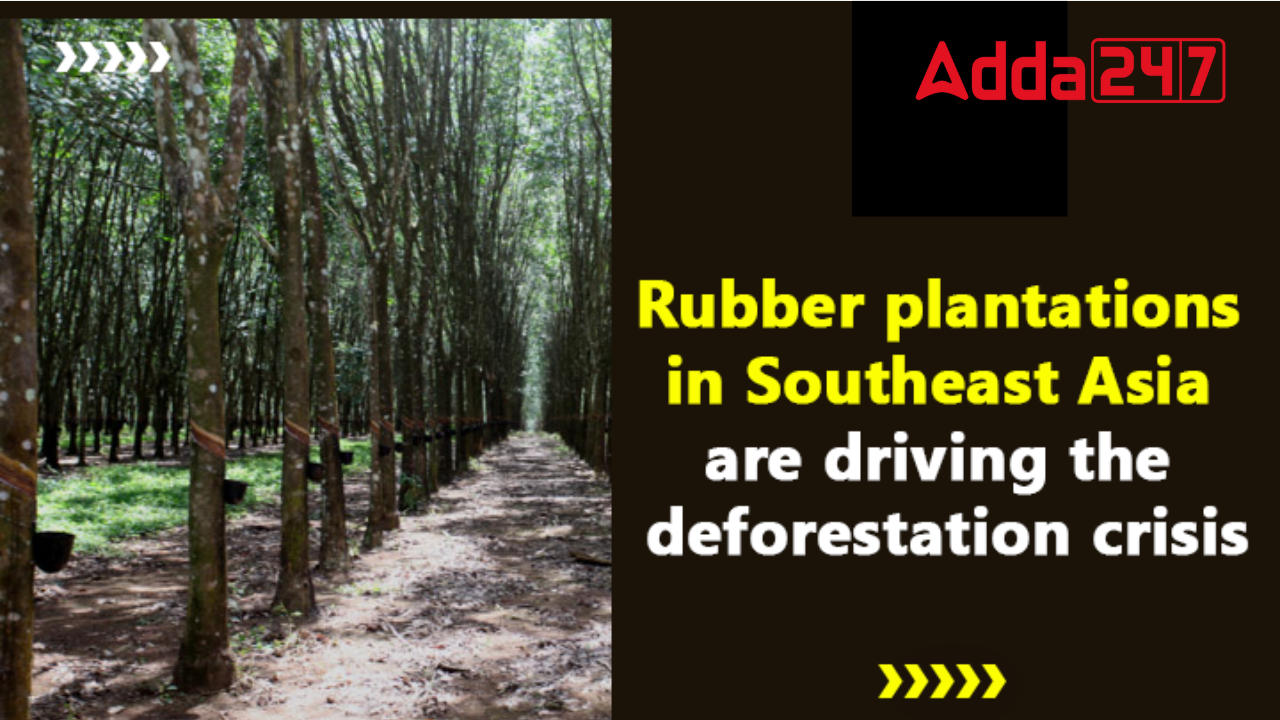Table of Contents
Rubber Plantations in Southeast Asian
In a recent study published in the journal Nature, researchers revealed startling findings about the environmental impact of rubber production in Southeast Asia. While rubber was previously considered a minor contributor to deforestation compared to commodities like soy and palm oil, high-resolution satellite data has now shed light on the devastating consequences of the rubber industry. It appears that forest loss due to rubber production is two to three times higher than previously estimated, with over 4 million hectares of forest lost to rubber plantations since 1993, primarily in Indonesia, Thailand, and Malaysia. This revelation presents significant challenges for importers and underscores the urgent need to find sustainable solutions.
Global Rubber Demand
Numerous sectors, including the automotive, agricultural, and manufacturing industries, have been driving up demand for rubber on a global scale. Rubber is a versatile material with countless applications, and its demand is only expected to grow further. However, this increasing demand is putting immense pressure on natural forests in Southeast Asia, the epicenter of rubber production.
Southeast Asia’s Role in Rubber Production
Southeast Asia is the epicenter of global rubber production, responsible for a staggering 90% of the world’s rubber supply. Countries like Thailand, Indonesia, and Malaysia have emerged as key players in this industry. However, this surge in rubber production has dire consequences for the region’s natural ecosystems, as vast stretches of precious forests are being sacrificed to make way for rubber plantations.
Previous Perceptions vs. New Revelations
Until recently, rubber was not at the forefront of discussions surrounding deforestation. Attention was primarily focused on commodities like soy and palm oil. However, the latest research demonstrates that rubber’s environmental impact has been grossly underestimated. High-resolution satellite data, coupled with improved identification of smallholder plantations, has revealed that forest losses due to rubber plantations far surpass prior estimates.
The extent of forest loss
The research indicates that more than 4 million hectares of forest have been lost to rubber plantations since 1993. Shockingly, approximately two-thirds of this forest loss occurred in Indonesia, Thailand, and Malaysia. These nations, celebrated for their natural beauty and biodiversity, are now facing an ecological crisis of unprecedented magnitude. The devastating effects of rubber production extend beyond national borders, as ecological damage reverberates throughout the region.
Growing Rubber Plantations
In addition to the extensive forest loss, the study also highlights the explosive growth of rubber plantations in the region. More than 14 million hectares of land are now dedicated to rubber cultivation in Southeast Asia, a substantial increase from the 10 million hectares recorded in 2020. This expansion is not only detrimental to the environment but also raises concerns about the long-term sustainability of rubber production in the region.
Conversion of Rubber Plantations
Furthermore, the research reveals that many rubber plantations, established during a rubber price boom around two decades ago, have been converted to other land uses following a price crash in 2011. This highlights the volatile nature of the rubber industry and underscores the need for sustainable practices to prevent further forest destruction.
EU Legislation and Its Implications
The European Union is aware of how quickly deforestation is occurring as a result of products like rubber. As a result, they have introduced a law set to take effect at the end of the next year, which prevents commodity importers from purchasing goods that contribute to forest loss. Originally, the law applied to products such as soy, beef, palm oil, wood, cocoa, and coffee, but rubber was added to the list in December last year. Importers will be required to provide evidence that the products they import do not come from land deforested after 2020.
Challenges for Importers
This legislation presents a significant challenge for importers, as it necessitates a comprehensive understanding of their supply chains. Rubber, due to its complex production process and the scattered nature of its cultivation, poses unique challenges for traders and manufacturers to trace the origins of their rubber. The legislation could encourage buyers to seek rubber from larger producers with more transparent supply chains. The shift could have far-reaching implications for smallholder rubber producers.
The Role of Smallholders
Smallholders play a pivotal role in global rubber production, contributing to 85% of the total output. These individuals often have limited resources and may not have access to sustainable practices or certification standards. Organizations like the Forest Stewardship Council are working diligently to improve traceability for smallholders and ensure that their rubber can be sold in Europe. Their efforts are aimed at making sustainable rubber production more accessible and economically viable for these smaller players in the industry.
Conclusion
The findings of a recent study on rubber production in Southeast Asia underscore the critical need for a more comprehensive and sustainable approach to the rubber industry. As global demand for rubber continues to rise, importers, producers, and governments must collaborate to mitigate the devastating impact of rubber plantations on the environment and biodiversity. The European Union’s legislation, while challenging for importers, may serve as a catalyst for positive change by encouraging more transparent supply chains and sustainable practices. Smallholders, who are responsible for the majority of global rubber production, must not be left behind in these efforts. It is imperative that the rubber industry undergo a transformation that balances economic growth with environmental conservation to ensure a sustainable future for all.



 TSPSC Group 1 Question Paper 2024, Downl...
TSPSC Group 1 Question Paper 2024, Downl...
 TSPSC Group 1 Answer key 2024 Out, Downl...
TSPSC Group 1 Answer key 2024 Out, Downl...
 UPSC Prelims 2024 Question Paper, Downlo...
UPSC Prelims 2024 Question Paper, Downlo...




